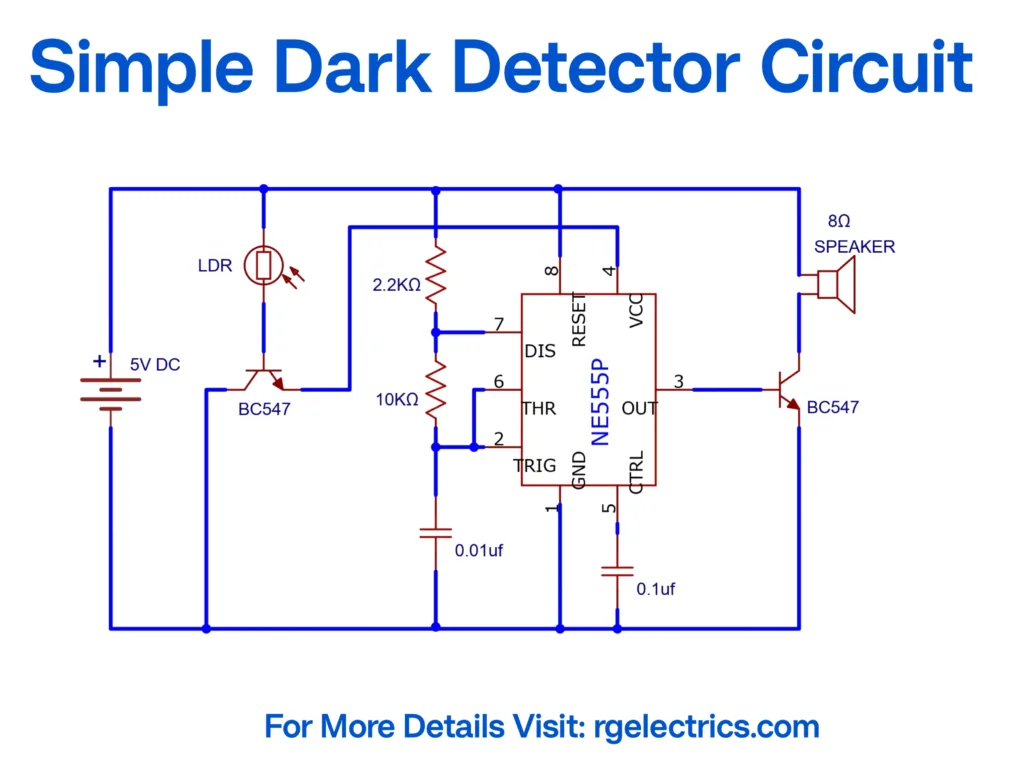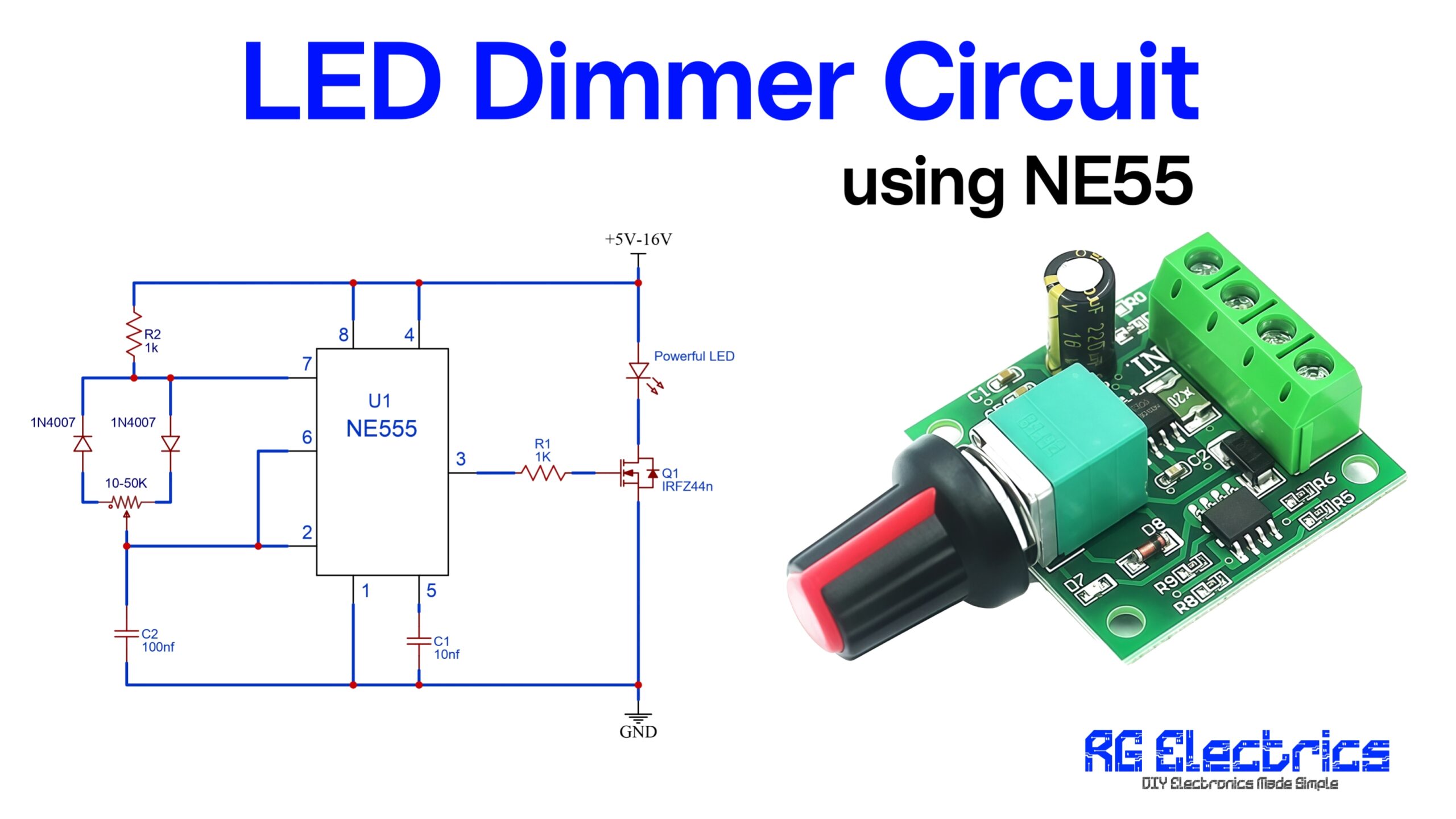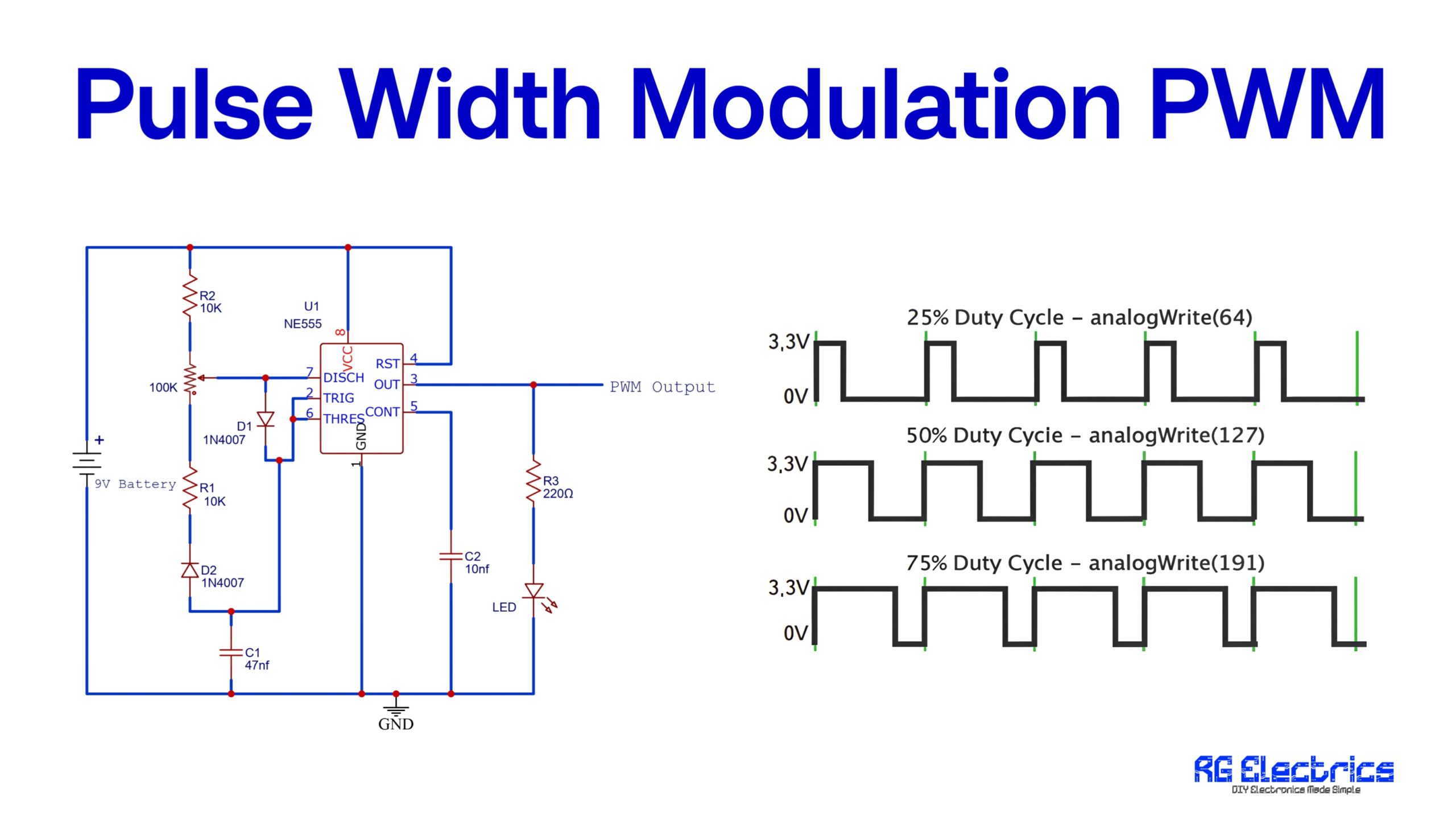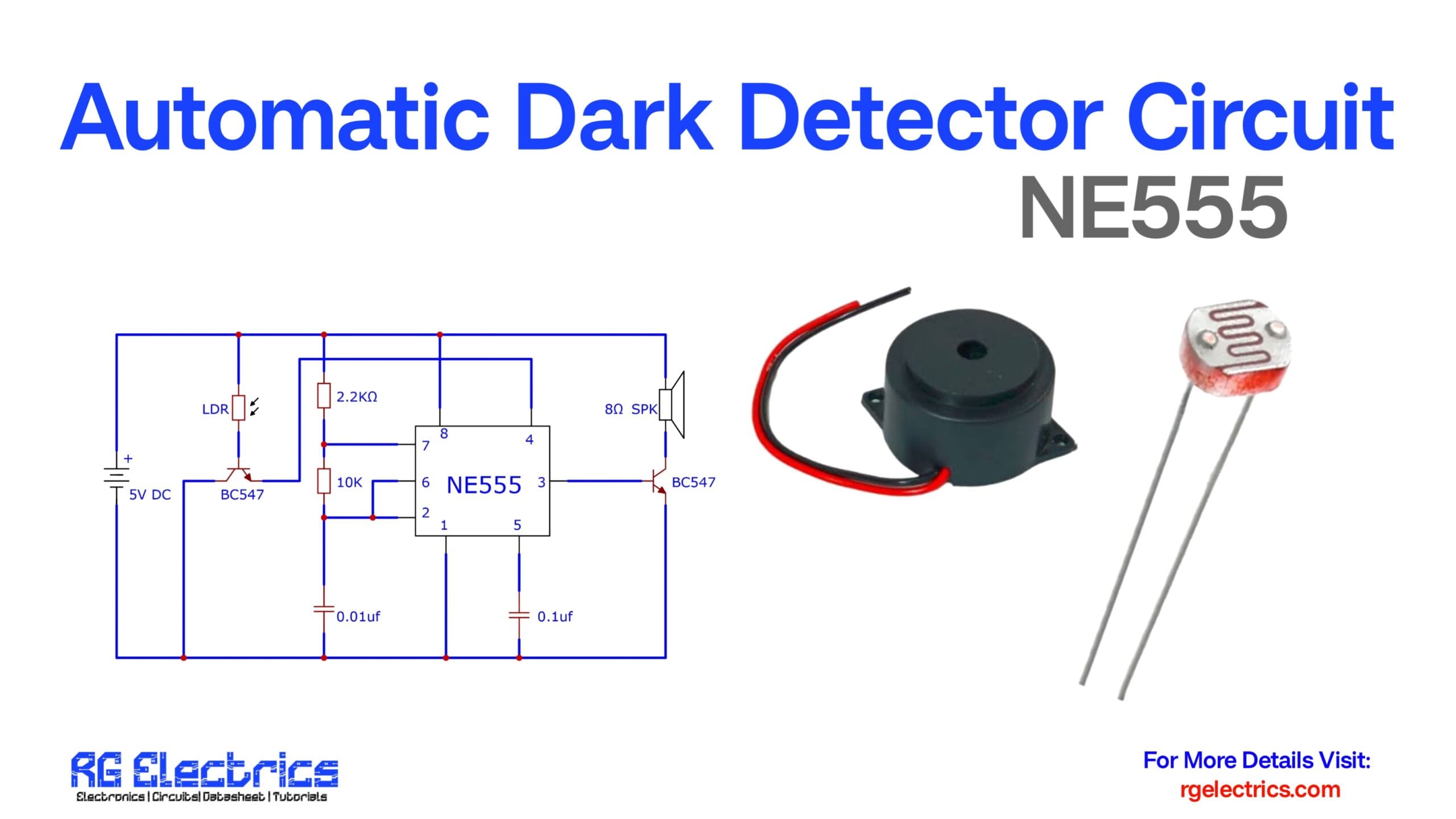Table of Contents
Introduction
A Dark Detector Circuit is an electronic circuit that detects the absence of light and triggers an output response, such as activating an LED or a buzzer. This type of circuit is commonly used in automatic night lamps, security systems, and emergency lighting. The key component of this circuit is the Light Dependent Resistor (LDR), which senses light levels and controls the circuit’s operation. The NE555 Timer IC plays a crucial role in processing the signal and generating the required output. This circuit is simple to build, cost-effective, and highly useful in various applications requiring automatic light detection and response.

Components List
To build this dark detector circuit, the following components are required:
| Component | Specification/Details |
|---|---|
| NE555 Timer IC | Timer IC for signal processing |
| Light Dependent Resistor (LDR) | Senses light intensity |
| Transistor BC547 (NPN) | Switches the circuit based on LDR input |
| Resistor | 2.2kΩ |
| Resistor | 10kΩ |
| Capacitor | 0.01µF |
| Capacitor | 0.1µF |
| 8Ω Speaker | Output device |
| 5V DC Power Supply | Provides power to the circuit |
| Connecting Wires | For electrical connections |
| PCB or Breadboard | For assembling the circuit |
NE555 Pinout

Circuit Diagram

Explanation of the Circuit
The working of this dark detector circuit can be understood as follows:
- LDR Sensing Mechanism:
- The LDR is a resistor whose resistance varies with light intensity. In the presence of light, the LDR has low resistance, allowing current to flow and keeping the transistor in an off state.
- In darkness, the LDR’s resistance increases significantly, causing the transistor (BC547) to turn on, which, in turn, activates the NE555 Timer IC.
- NE555 Timer Functionality:
- The NE555 IC is configured in a monostable mode, meaning it triggers an output signal when activated by the transistor.
- The output pin (Pin 3) of the NE555 generates a high signal when the transistor turns on in the dark.
- Output Activation:
- The output from the NE555 IC is connected to a speaker (or LED).
- When darkness is detected, the circuit activates the speaker to produce a sound (or an LED to glow).
- The circuit remains in this state until light falls on the LDR again.
Applications
This simple dark detector circuit can be used in various applications, such as:
- Automatic Night Lamp: It can switch on an LED or a lamp when it gets dark.
- Security Systems: It can act as a burglar alarm by detecting unexpected darkness.
- Street Light Automation: Can be used to turn on streetlights automatically at night.
- Garden Lighting: Helps in designing smart lighting solutions for gardens or pathways.
- Emergency Lighting System: Can be used to turn on emergency lights in case of power failure.
Conclusion
The Dark Detector Circuit using the NE555 Timer IC is a simple and effective way to automate lighting and alarm systems based on light intensity. It is easy to build with minimal components and is widely used in real-life applications such as security and lighting automation. By tweaking the component values, the circuit can be modified for various sensitivity levels and different output devices.















